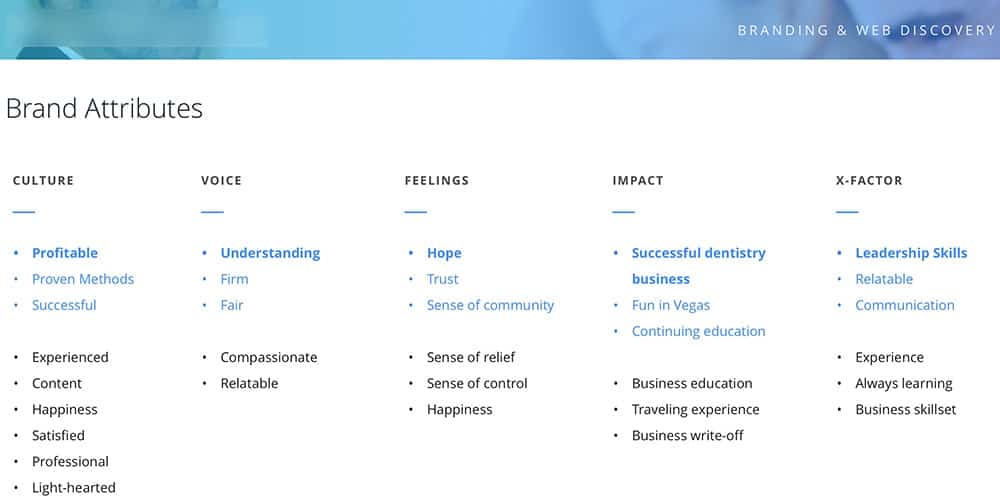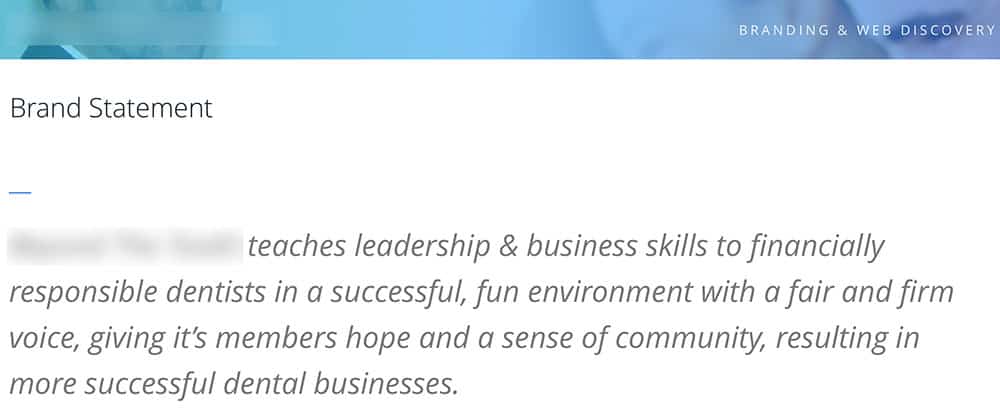How the Discovery Process Improves Web Design for Businesses
One of the biggest challenges of any web design project is creating a website that fulfills the goals of the client, serves the needs of customers, and is aesthetically pleasing.
Get a Free Marketing Analysis and Consultation
Nowspeed can review your Website, SEO, PPC, Email or Social Media Campaigns and identify ways to make an immediate impact!
The “discovery process” is the most important meeting you can possibly have before starting a web project, in terms of the ratio of information gained versus time spent.
Discovery is how we gather and organize as much information about a business as possible. This process is often overlooked, resulting in substandard results.
Here’s an idea of why discovery is important for a designer: You’re designing and building a house for a client. You need to know a thing or two about the client, right? You’re not going to build a cute little cottage for a husband and wife with six kids. And you’re definitely not going to build a sprawling three level home for an eighty year old man. If there are kids, you need more space, and maybe you’ll need a game room. If the clients are older, you probably want the home to be a single story—and if they have mobility issues, you probably want to keep the counters low, make the hallways extra wide for wheelchairs, and so on. The identity and nature of the customer dictates the form and function of the house.
The same is true for a website. This is why, when I’m designing a website I make an appointment to sit down with the client and develop an understanding of their business and their goals for the website. This is the discovery meeting.
The first question you have to ask is, who are you designing the website for?
Is it for the client, or their customers? This can be a really tough debate. Many people believe that the user always comes first. However, my years of experience has taught me that it’s actually the brand that comes first, and the goal of the designer is to provide customers the best possible experience within the boundaries dictated by the business and its brand.
One of the things I keep in mind is that I’m an advocate for the customer, to a certain degree. I have to fight to make the user’s process as easy as possible, while still respecting the needs of the business. Do I need to require a user’s last name in a web form? Do I need both their email address and phone number?
Sometimes the best design choices will never even be noticed by a user, even though they will affect the user’s behavior on the site, and even determine whether they stay on the site at all. For example, showing the play length of a featured video, so that a visitor knows ahead of time what their commitment is. Or, rather than having that button on a web form that says “submit,” why don’t we label it in a way that better communicates what that button push does—something like “submit appointment request” or “request phone call.”
A discovery meeting is really a mediation process.
Discovery boils down to a series of questions that allows the designer—me, in this case—to gain the insight necessary to act as a consultant on the project. I’m a facilitator. I facilitate the needs of all of the company’s stakeholders.
In the discovery meeting with the company’s internal stakeholders (management, employees, sales staff), I’ll ask a lot of questions about their brand. A company’s brand boils down to six key components:
- Culture
- Customer
- Voice
- Feelings
- Impact
- X factor
In the meeting, I’ll ask everyone present to offer up 1 to 3 word phrases that describe each of these six qualities. I usually strive for at least 6 to 10 adjective-based phrases for each component, and will sometimes throw out ideas to help them brainstorm. “How do customers feel when they experience your product or service? Cared for? Care free? Confident?” It’s important to emphasize that this is a judgmental process. There are no “bad” ideas, because a seemingly bad idea can spark a good one.
The goal here is to identify how the company wants to be seen. If there’s a big gap between the current state of the company and where the company wants to be, then I’ll push the group to focus on the latter—to create something to strive for.
Once we have a long list of adjectives for each of the six components, I’ll prompt the group to try and pick the best three adjectives for each one. If at all possible, I’ll push them to agree on one.

The brand description chart above, as well as the extracts shared below, are from a discovery meeting with a business specializing in helping dentists and dental offices improve the performance of their businesses. In this case, we came up with a number of descriptive adjectives, which we ultimately boiled down into the six key adjectives at the top of each list.
Then, we create a mission statement that distills the company’s brand identity.
Then, using these (hopefully only) six adjectives, we’ll create a mission statement or brand statement that incorporates all of these descriptive adjectives. This statement and all of the information gathered will be compiled into a discovery document so that anyone who touches the project at any point in the development process can quickly develop an understanding of what we’re shooting for as an end result.
Discovery creates a common understanding between everyone involved: the client, the designer, the developers, the writers, everyone.

You’ll notice that we don’t restrict ourselves to incorporating each phrase in the exact form that was originally suggested. “Profitable” becomes “financially responsible, an “understanding” voice is transformed into a “sense of community,” and so on. But the brand statement conveys the message of each of those phrases and encapsulates them into a single cohesive mission.
Lastly, we focus on customers’ needs and interests.
Up until now, the discovery meeting focuses on the company’s internal view of their brand and goals for the brand. Once we’ve nailed this down, it’s time to shift to the final part of the process: identifying the customers using the website.
I create a chart with four quadrants, one for each subcategory of customer: current customers, ideal customers, employees, and influencers (e.g. food critics, reviewers). For each of these customer types, we flesh out identifying details”
- Demographics, such as their culture and career area.
- Backstory problems. What are the issues that are plaguing them?
- Their needs and wants. What are they looking for that we can help them find?
- How we can exceed their needs. What could we do that wouldn’t just satisfy them, but really impress them?

In the example, notice how much we hone in on our target audience. While dentists typically range in age from 26 to 55, with the most common demographic being 30 to 45, our ideal customer is on the high end, 50 years old. The client is really looking for dentists who are close enough to the end of their careers that they’re feeling the pressures of oncoming retirement, and really need to push their practices to the next level.
This information obtained through this customer identification exercise is some of the most important data produced by the discovery meeting. During the design process, I’ll come back to this information again and again to make sure that what I’m creating is in line with these customers and their needs, while still reflecting the business’s brand and their goals.
The discovery process goes a long ways towards creating a website that operates as an extension of a business and its brand, and that explicitly fulfills the needs of customers. That’s why I use this process in each and every web project that I work on, and why you should fully expect your web developer to follow this process. Without discovery, you’re flying blind.
So let's
talk.
We're always excited to dig into the details of your company and what strategy can help you meet your goals. So let's talk and lay out a plan for success!